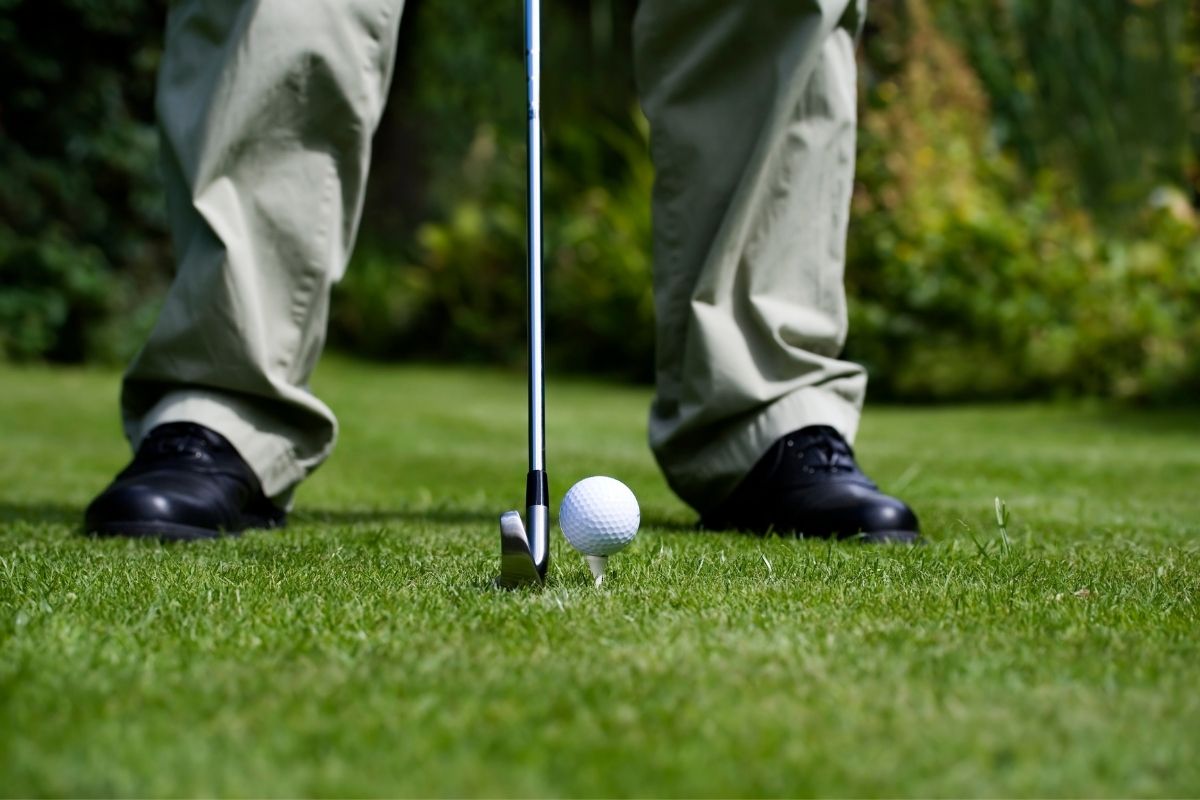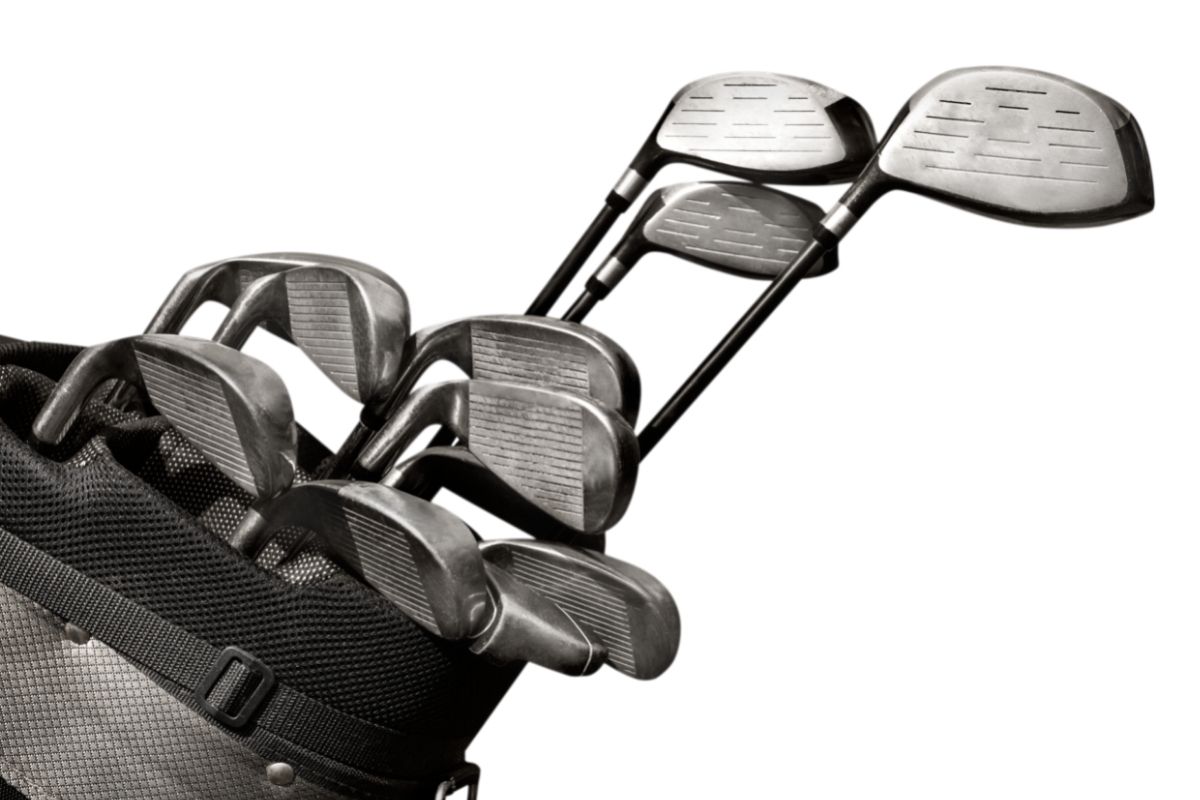We occasionally recommend products we love and might be paid a share of the sale.
How far away from the hole should I aim my shots? What distance should I hit the ball? How much farther back should I take my stance?
These questions are important to golfers of every level, but they also affect the average golfer who wants to play better.
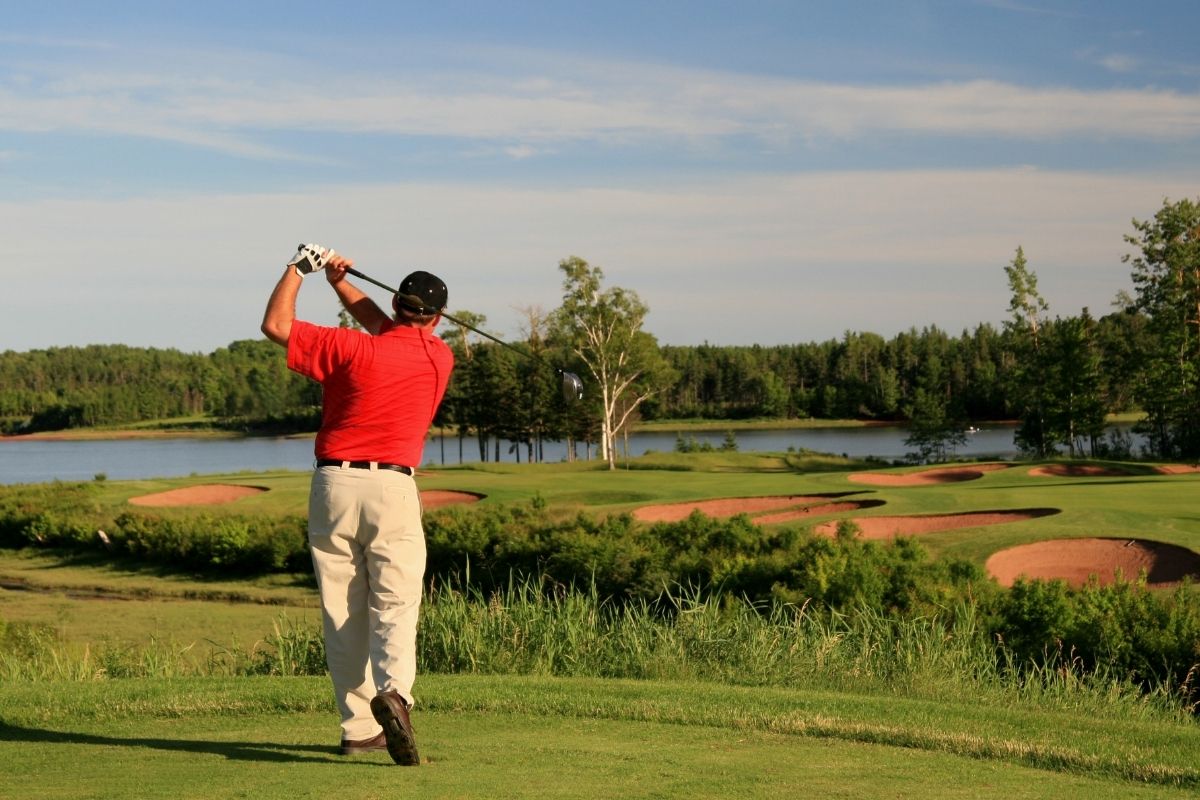
Golf is a sport that requires precision and accuracy. The golfer’s aim with every hole they play is to get their golf ball into the hole in as few strokes as possible.
As you probably already know, the various different types of golf clubs give the golfer the ability to reach different distances with each stroke.
Each club in a golfer’s arsenal has its own characteristics, such as loft, length, and grip size. These will all play a part in determining the maximum distance that a golfer is able to hit the ball.
In general, there are three main types of clubs: woods (driver, fairway wood), irons (3–10), and putters.
Woods are usually longer than irons and are used for long drives. Irons are shorter than woods and are used for mid-range shots. Putters are typically smaller than other clubs and are used for short approach shots.
While it’s all well and good having a diverse range of clubs at your disposal, that variety won’t give you any benefits if you don’t know how to select each club appropriately.
In this in-depth guide, we’re going to be taking a look at the average distances that golfers can achieve with each different club type and explaining how you can apply them to your own game.
What Other Factors Can Affect Shot Distance?
Before we get into the specifics of which clubs are better suited for certain distances, let’s go over all the other factors that can come into play.
Gender
As with most sports, gender has a role to play in determining how an athlete can perform. This is why all competitive sports separate men and women into their own respective categories to compete against members of their own sex.
In golf terms, men are able to hit balls further on average than women. Of course, this isn’t always the case and there are plenty of women out there who could strike a ball further than a lot of men.
However, this is a general rule of thumb that should be applied to golf when thinking about club selection and distance.
Muscular Strength
An even greater determining factor of stoke distance than gender is the golfer’s own physical strength.
Particularly with shots over a great distance, a ball will only travel as far as the force you’re able to apply to it with your club. This force is generated majorly by your upper body strength.
Even with perfect technique, it’s still important for golfers to have good upper body strength to generate as much power as possible on their longest shots.
Age
Again, just like with all sports, age is a key determining factor of an athlete’s ability.
In terms of golf, a higher age generally equates to a lower maximum shot distance. This is because age causes a person’s muscular strength to decline, leaving golfers with less explosive strength as they get older.
There’s definitely no shame in being an older golfer, though. Golf is one of the few sports that is just as accessible to people in their 20s as it is for people in their 80s.
Plenty of professional golfers have careers that go on for several decades after athletes in other sports are forced to retire.
Weather
You’ll often hear people on your local golf course complaining about how the weather is affecting their play.
When it comes to maximum shot distance, bad weather can have a dramatic effect on the outcome of each stroke.
For example, a strong wind heading in the same direction as your shot can carry the ball further than would otherwise be possible.
Alternatively, wind blowing in the other direction could cause your shot to fall way shorter than it normally would.
Ability
Definitely, the most influential factor of these five is ability. When it comes to golf, technique and precision are everything and sheer upper body strength will only get you so far in the sport.
Beginners might be able to generate a lot of force to strike the ball with but an experienced golfer will always be able to outdistance them with superior technique.
When thinking about your own ability level and how it applies to your maximum striking distance with a certain club, it’s important to be honest with yourself to determine the appropriate club selection.
Golf Club Distances By Skill Level
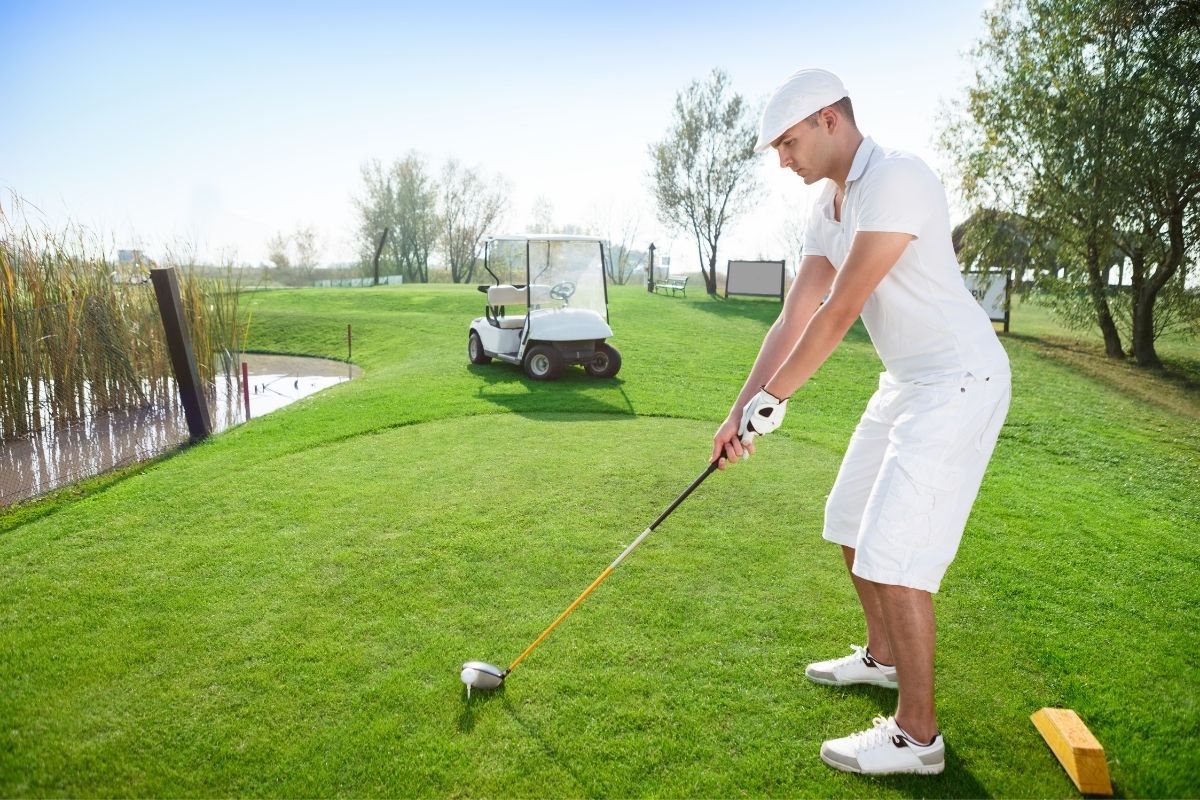
Let’s start by taking a look at an average shot distance for each club based on the most important external factor: ability.
Of course, it’s impossible to determine your own level of ability with a number or statistic, so again, it’s crucial to be honest with yourself and place yourself into one of these categories, appropriately.
Beginner Golfers
- Driver: 190 yds
- 3-wood: 170 yds
- 5-wood: 150 yds
- Hybrid: 145 yds
- 2-iron: 145 yds
- 3-iron: 135 yds
- 4-iron: 125 yds
- 5-iron: 120 yds
- 6-iron: 115 yds
- 7-iron: 105 yds
- 8-iron: 95 yds
- 9-iron: 80 yds
- Pitching wedge: 70 yds
- Gap wedge: 60 yds
- Sand wedge: 55 yds
- Lob wedge: 40 yds
Intermediate Golfers
- Driver: 220 yds
- 3-wood: 210 yds
- 5-wood: 195 yds
- Hybrid: 180 yds
- 2-iron: 180 yds
- 3-iron: 170 yds
- 4-iron: 160 yds
- 5-iron: 155 yds
- 6-iron: 145 yds
- 7-iron: 140 yds
- 8-iron: 130 yds
- 9-iron: 115 yds
- Pitching wedge: 100 yds
- Gap wedge: 90 yds
- Sand wedge: 80 yds
- Lob wedge: 60 yds
Good Golfers
- Driver: 250 yds
- 3-wood: 225 yds
- 5-wood: 205 yds
- Hybrid: 190 yds
- 2-iron: 190 yds
- 3-iron: 180 yds
- 4-iron: 170 yds
- 5-iron: 165 yds
- 6-iron: 160 yds
- 7-iron: 150 yds
- 8-iron: 140 yds
- 9-iron: 125 yds
- Pitching wedge: 110 yds
- Gap wedge: 100 yds
- Sand wedge: 95 yds
- Lob wedge: 80 yds
Experienced Golfers
- Driver: 280 yds
- 3-wood: 235 yds
- 5-wood: 220 yds
- Hybrid: 210 yds
- 2-iron: 215 yds
- 3-iron: 205 yds
- 4-iron: 195 yds
- 5-iron: 185 yds
- 6-iron: 175 yds
- 7-iron: 165 yds
- 8-iron: 155 yds
- 9-iron: 145 yds
- Pitching wedge: 135 yds
- Gap wedge: 125 yds
- Sand wedge: 115 yds
- Lob wedge: 105 yds
PGA Tour Golfers
- Driver: 296 yds
- 3-wood: 262 yds
- 5-wood: 248 yds
- Hybrid: 242 yds
- 2-iron: 236 yds
- 3-iron: 228 yds
- 4-iron: 219 yds
- 5-iron: 209 yds
- 6-iron: 197 yds
- 7-iron: 185 yds
- 8-iron: 172 yds
- 9-iron: 159 yds
- Pitching wedge: 146 yds
- Gap wedge: 135 yds
- Sand wedge: 124 yds
- Lob wedge: 113 yds
Of course, for the majority of people reading this article, there’s no point in comparing yourself to the PGA Tour golfers at the bottom of this list because these people have worked hard for many years to get to the level they’re at today.
Instead, the beginner, intermediate, and experienced categories are far more appropriate for most golfers.
How Does Swing Speed Affect Distance?
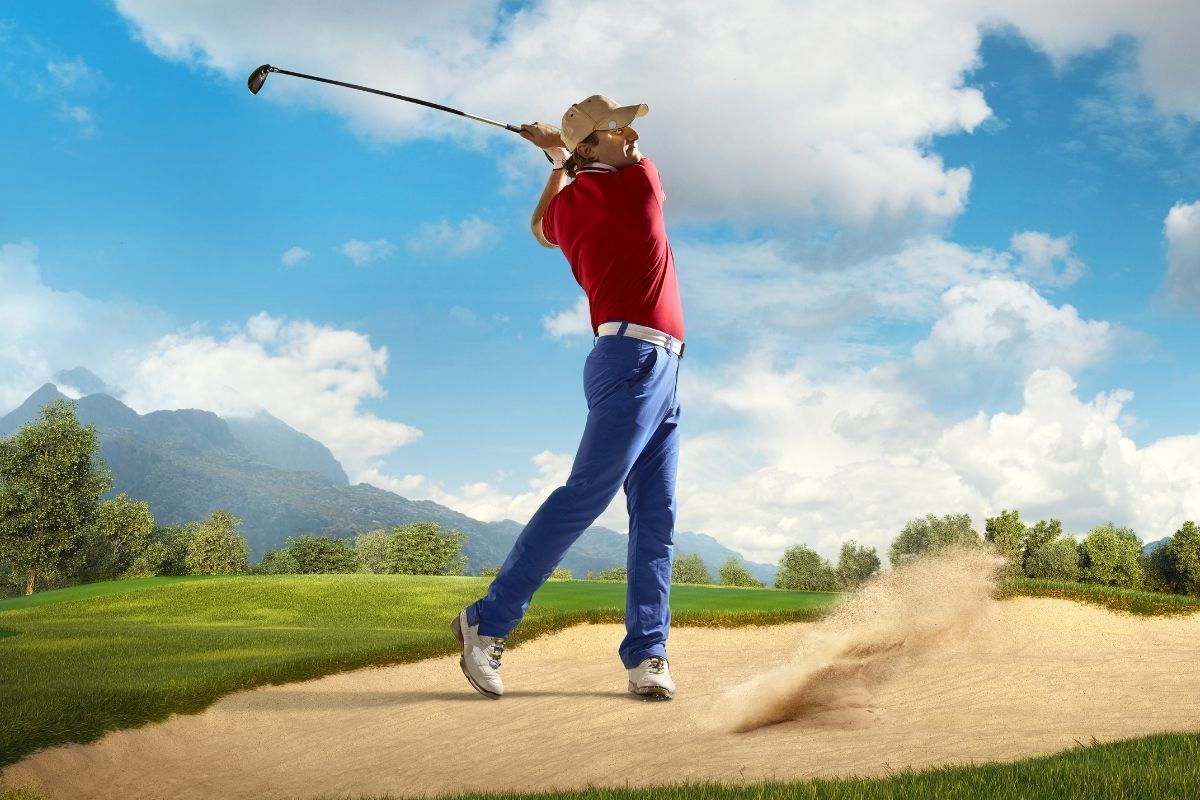
It might seem obvious, but it’s worth mentioning that swing speed does have a massive impact on the overall distance we’re able to hit a golf ball.
In general, the faster we move through the back swing and downswing, the farther we’ll hit the ball. However, if we take too long during those movements, our clubs will not have enough time to accelerate forward before hitting the ball, which means less power is transferred from our bodies to the golf club.
In other words, you can’t just go full throttle all the way through the swing without sacrificing some distance.
So what exactly do we mean when we say “full throttle”?
If you’ve ever watched a professional golfer play, you know that their swings are very fast. They don’t waste any movement whatsoever, and they never slow down or stop moving until they’ve completely finished their swing.
This type of motion is known as “full throttle” because it allows them to generate maximum force with minimal effort.
However, if you watch someone who isn’t nearly as good, you may notice that they tend to be much slower than the pros. Their arms aren’t quite as quick, so they need to use more energy to get the same amount of momentum.
Unlike ability and muscular, upper body strength, swing speed is something we can define with a number, and you can check out the estimated yards achieved by each club at different swing speeds here.
What Is It About Clubs That Make The Distances Vary?
We’ve already established the different factors about the golfer themselves that can affect their own shot distance but what features and characteristics of the clubs affect this distance?
Loft
The loft of a club is simply the angle between the shaft and the face when looking from above.
When you think about it, the higher the loft, the farther back the ball will travel after impact.
For example, if you were to compare a 3-wood with a 5-wood, the loft difference would be 15 degrees. If you were to compare a driver with a pitching wedge, the loft difference would also be 15 degrees.
In general, the higher the loft of a club, the longer the shot will fly.
Face Angle
Another important factor that impacts shot distances is the face angle of the club.
This refers to how much open or closed the face of the club is relative to the ground.
If the face of the club was perfectly flat on the ground, then the face angle would be zero degrees. This means that the clubface would be perpendicular to the ground.
If the face of the club had an angle of 45 degrees, then the face angle is considered neutral.
If the face angle were greater than 45 degrees, then the clubface would be angled away from the target.
Generally speaking, the larger the face angle, the shorter the shot will go.
Club Length
As you might expect, the length of the club matters too.
Longer clubs mostly mean a lower trajectory while shorter clubs usually mean a higher trajectory.
However, the relationship between club length and shot distance isn’t as straightforward as it may seem.
Longer clubs tend to produce straighter shots. However, the further the club travels before hitting the ball, the less accurate those shots become, meaning longer clubs are often more difficult to control.
On the other hand, shorter clubs require more work to hit the ball straight. But once the ball leaves the clubface, it tends to carry farther.
So which type of shot do you want? A long, straight shot or a short, controlled one?
That’s up to you!
But remember, just because something works for one person doesn’t necessarily mean it will work for another.
So take your time and try out all sorts of clubs until you find the right combination for you.
Shaft Flex
Now we come to the final topic of this article: shaft flex.
Shaft flex quite simply refers to how much bend the shaft of the club will give and there are two types of shafts: stiff and flexible.
A stiff shaft has a very rigid feel in your hands, almost like a stiff plank of wood. Alternatively, a flexible shaft is much softer, easier to grip, and has a bit more bendability to it.
It’s not uncommon for some people to prefer a stiff shaft over a flexible one but there are plenty of golfers who enjoy the flexibility of a flexible shaft.
Interestingly, even though they don’t always know why, these golfers actually tend to have better results than those who opt for a stiff shaft.
A more flexible shaft often equates to more power in a long-range shot, as was found by a 2012 Sports Biomechanics study.
However, this added power often comes at the detriment of control and accuracy.
Therefore, golf clubs with a ‘regular’ shaft flex are the most popular as they find a nice middle ground between stiffness and flexibility.
Each Golf Club Explained For Maximum Shot Distance
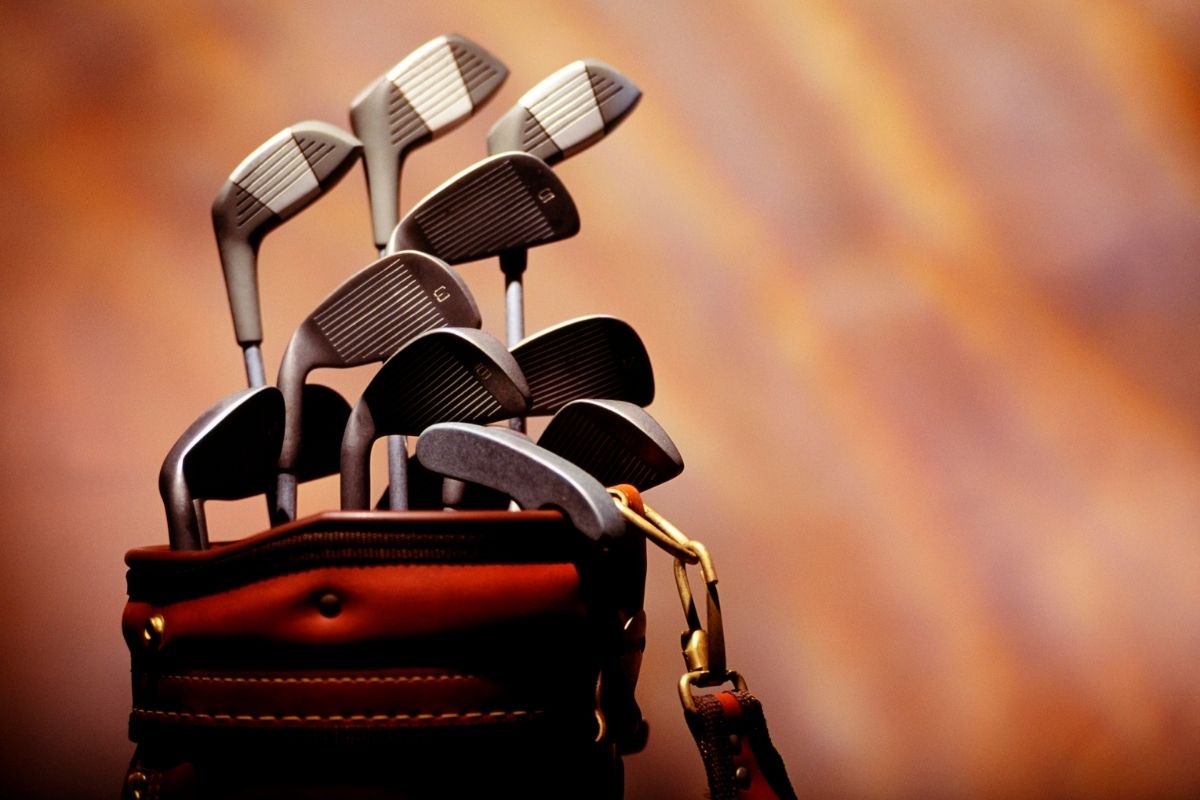
To finish things off, let’s take a closer look at each golf club you’d typically take to the course with you and use what we’ve already learned to find out why some are better than others for hitting long shots.
Driver
The driver is the longest club in your bag and its sole purpose is to get the ball airborne.
This is where the rubber meets the road when it comes to distance.
In general terms, drivers can be divided into three categories based on their loft angle: low, mid, and high.
Low-lofted drivers are generally used for driving down the fairway and hitting the green from the rough. Mid-lofted drivers offer greater forgiveness and are great for approach shots around the greens. High-lofted drivers provide more backspin and are ideal for slicing the ball.
Wood
Woods are essentially a type of driver and drivers can basically be considered ‘1-drivers’ because they have the lowest loft of any golf club.
However, the two types of wood clubs; 3-woods and 5-woods, have a higher loft than drivers and will therefore not be able to make the ball travel quite as far.
The wood is something you’d typically break out for an initial tee shot on a shorter hole where a driver might generate a little too much distance for you to reach your target.
Hybrid
Hybrid golf clubs are pretty unique and you won’t often find them in an amateur’s bag, alongside a wood and an iron. This is because hybrid clubs are basically a cross between those two types of clubs.
In the modern-day, more and more people are opting for hybrids instead of woods because of how versatile they are.
For example, you could use a hybrid club to get yourself out of some long grass just as easily as you could use it to tee off on a shorter hole.
This type of club may only have been around since 2003, but it’s quickly been adopted by many professionals.
Irons
Irons are the second-longest club in your bag after the driver and are used for both teeing off and putting.
From the previous lists we’ve looked at, you’ll have noticed that irons are categorized by number, typically from 2-9. This number refers to the loft of each club, with a higher number indicating a higher loft.
Irons can also be categorized further into three sets: long irons (2, 3, and 4), mid-irons (5, 6, and 7), and short irons (8 and 9).
If you take a look at the average distances for each iron that we looked at earlier, you’ll see that long irons are generally much better for hitting the ball a greater distance than the short irons, thanks to their reduced loft.
Therefore, when thinking about which iron to use for a particular shot, it’s important to consider the distance you want to cover to reach your target.
Wedge
Wedges are the third-longest club in our bag and are used for everything from sand wedges to lob wedges.
There are also a few different varieties of wedges: pitching, gap, sand, and lob. The name of each wedge does a pretty good job of explaining what they should be used for but let’s take a look at each one in some more detail.
Pitching wedges are often the most lofted clubs in a golfer’s bag, with a loft often ranging from 44-48 degrees. They are used for hitting long wedge shots onto the green and are also pretty useful for short pitch and run shots near the green.
Gap wedges are a little less lofted than pitching wedges and a little more so than sand wedges, acting as a good middle ground between the two. They can be used effectively for full shots, pitch shots, bump and run shots, and longer bunker shots. Essentially, this club doesn’t have its own unique purpose but is good for a variety of wedge applications.
Sand wedges are pretty self-explanatory as they are designed to help get the ball out of sand bunkers on the course. They have a more wounded, wider sole that helps the club to get under the sand and lift the ball upwards, rather than getting stuck underneath it.
Finally, the lob wedge (also known as a lofted wedge) is used primarily for hitting some of the shortest chipped shots on a hole. They have a fairly high loft, which gives their shots a very high arc. This is the ideal club to have around when you’re trying to navigate over an obstacle like a rock or some long grass.
How To Work Out Your Average Distance With Each Club
So, we’ve already been over all the external factors that will affect your average distance, as well as the role that each club will play. However, you might still be wondering how you can best estimate your own personal average distance with your clubs.
Over time, experienced golfers will gain an innate understanding of their own distance potential, simply through years of practice. This isn’t always something that people specifically work on and many just rely on it coming naturally over time.
However, you can definitely get a better understanding if you’re newer to golf, just by practicing.
The best way to do this is at your local driving range. Plenty of ranges will have indicators of distances from the tee, so you can get a pretty good idea of how far each shot goes.
Simply take all of your clubs to the driving range and hit plenty of shots with each one. To get really accurate results, you should hit as many as possible with each club, though at least 50 will do.
After each shot, keep a record of the distance and once you’re done you can observe the results. It’s a good idea to remove the best and worst 5 shots with each club as these could be attributed to luck or weather conditions.
The average distance of your remaining shots should be an accurate reflection of your average distance with that club.
How To Use A Rangefinder On A Golf Course
If you weren’t already aware of what a rangefinder is, it’s the perfect tool to give you accurate measurements of the distance between your ball and your target on a golf course.
There are plenty of different rangefinders available online and you can often find a good one for under $100.
Most rangefinders look something like a small telescope and are meant to be used in a similar fashion.
Simply look through the lens of your rangefinder and aim the dot or crosshair at the top of the flag you’re aiming for. The lens will then display the distance from yourself to the flag, usually with a degree of accuracy of roughly 10 yards.
However, a more accurate device would be a laser rangefinder. These will emit an invisible laser beam from the device in your hand to the target further down the course.
It will definitely take some practice to get the hang of aiming a laser rangefinder properly but once you do, you’ll have the most accurate measurements of distance possible (without using a very long tape measure!).
Once you have a measurement of the distance between your ball and your target, you can apply all of your newly acquired knowledge about club distances to select the appropriate club for your shot.
Conclusion
So there you go! That was our guide to estimating your average distance with your clubs based on the information provided above.
As you can see, it’s not exactly rocket science, and it doesn’t necessarily require any special equipment, though a rangefinder can be very useful. In general, though, all you need is a bit of practice and a keen eye.
As always, the best way to find your range and improve your game is to practice, so good luck out there!
- Funny Golf Terms - February 21, 2023
- How To Play Vegas Golf Game - February 16, 2023
- How To Play Wolf Golf Game - February 16, 2023


